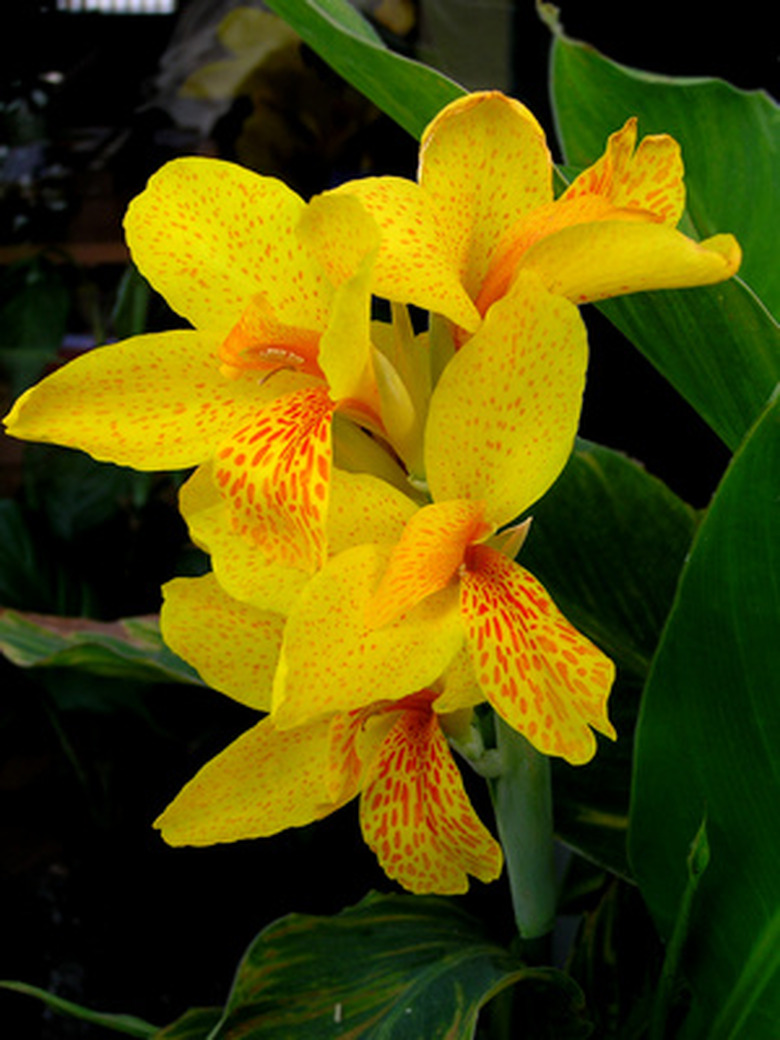How To Care For A Cannis Flower
Canna lilies are exotic warm-weather perennials that often will bloom year round in their native habitat. Canna lilies grow from rhizomes, which are thick, underground stems. Big, flashy leaves grow from the rhizomes, and the lilies pop up from the base of the leaves. In spite of their delicate beauty, canna lilies are tough, adaptable plants that are basically trouble-free as long as they get enough sunlight, warmth and moisture.
Step 1
Plant canna lily rhizomes as soon as the weather warms in spring. Plant them where they will be exposed to full sunlight and in an area where the soil drains well. Amend the poor soil by mixing 3 to 4 inches of peat moss, rotted manure or compost into it.
- Canna lilies are exotic warm-weather perennials that often will bloom year round in their native habitat.
- In spite of their delicate beauty, canna lilies are tough, adaptable plants that are basically trouble-free as long as they get enough sunlight, warmth and moisture.
Step 2
Plant the canna lily rhizomes 3 to 4 inches deep. Allow approximately 1 foot between each rhizome if you are planting dwarf canna lilies. Allow at least 2 feet for large varieties.
Step 3
Water the canna lilies immediately after planting and twice a week when there has been no rainfall. Keep the soil moist at all times.
Step 4
Feed canna lilies monthly during spring and summer with a balanced general purpose fertilizer, applied according to the recommendations on the package.
Step 5
Deadhead or remove canna lily blooms after they fade. Clip off the bloom and the stem down to the next shoot. Deadheading will assure that the canna lilies produce blooms as long as possible. Cut the blooms for bouquets as often as you like.
- Plant the canna lily rhizomes 3 to 4 inches deep.
- Allow approximately 1 foot between each rhizome if you are planting dwarf canna lilies.
Step 6
Allow the foliage to remain after the canna lily stops blooming. The leaves store sunlight and energy for the rhizomes, garanteeing healthy blooms next year. When the leaves die down and turn yellow, the foliage can safely be removed.
Step 7
Dig the calla lily rhizomes after the first frost if you live in a climate with freezing winters. Cut the stems down, leaving only 2 to 3 inches of stem intact. Set the rhizomes aside to dry for several days, then store the rhizomes in cardboard boxes or paper bags filled with peat moss. Put the rhizomes in a cool room where the rhizomes won't freeze and the temperatures will remain between 40 and 50 degrees F.
- Allow the foliage to remain after the canna lily stops blooming.
- Dig the calla lily rhizomes after the first frost if you live in a climate with freezing winters.
Step 8
Divide the canna lilies every two to four years. Dig up the clump of canna lilies and divide the rhizomes at their natural breaking point. Allow the rhizomes to dry for a few days, then plant them or store them for the winter.
Tip
Division can be done when you dig the rhizomes to store them for the winter. If you live in a warm climate where the canna lilies can remain in the ground for the winter, divide the rhizomes when the weather warms in spring.
Things Needed
- Canna lily rhizomes
- Peat moss, rotted manure or compost
- Shovel
- Balanced general purpose fertilizer
- Cardboard boxes
- Paper bags
- Peat moss
